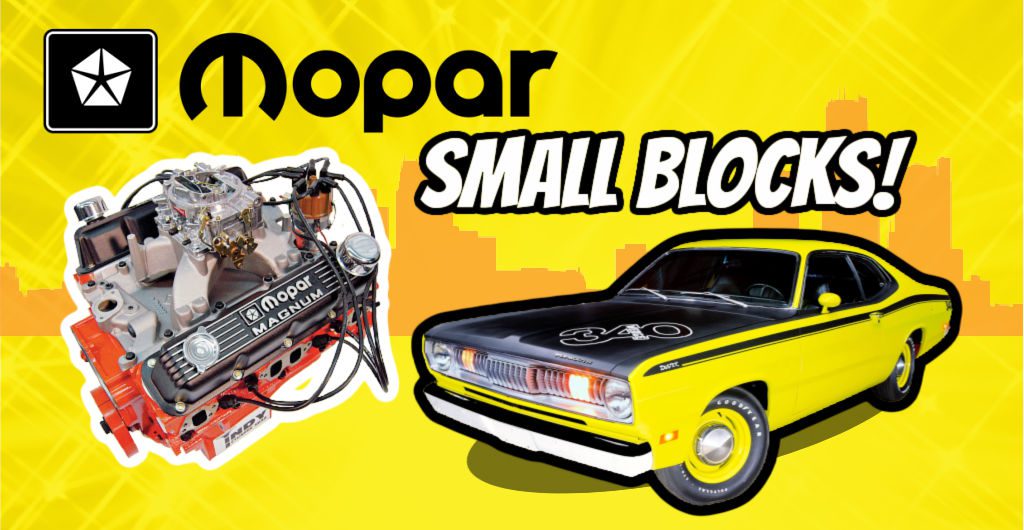
Table of Contents
Mighty Mopar Small Blocks
Let’s face it: a small block Mopar will never receive the same recognition and attention as their big-block counterparts.
However, that doesn’t mean we can’t let them shine while paying proper tribute to these often underrated and overlooked Mopars.
This article will look at 12 small block Mopar muscle cars from 1965-1974, including engine specs, performance, and production figures.
High-performance small block Mopar engines came in various body styles from Chrysler, including A and E-body models and, yes, even B-Bodies.
Chrysler produced nothing but LA family of engines when it comes to small-block V8s in a Chrysler from this period.
LA Engine Small Blocks
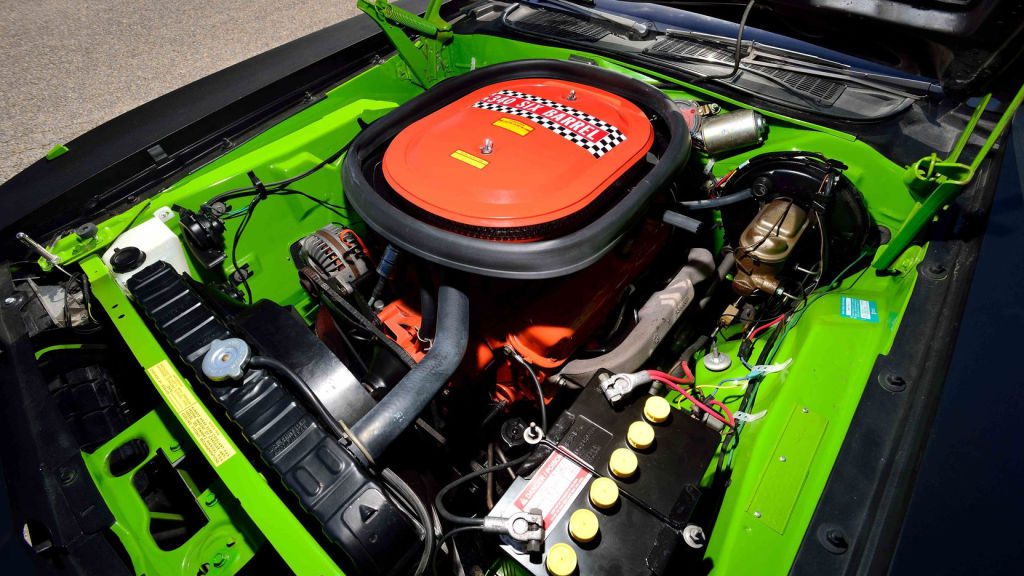
The Mopar small block LA family of V8 engines includes 273, 318, 340, and 360 cubic inch variations built by Chrysler from 1964 through 2003.
Big block Mopar muscle cars equipped with a 440 and 426 Hemi often dominate the headlines because of the power and performance they provided.
However, small block Mopars were mighty street warriors that deserve far more accolades and attention.
At roughly 100 pounds lighter, small block powered Mopars did offer an advantage over the big block siblings.
They were not only better-handling vehicles, but they were also more enjoyable and cost-effective to drive over long distances.
Let’s take a look at 12 killer small block Mopar muscle cars, shall we?
12 Small Block Mopar Muscle Cars
1965 Plymouth Barracuda Formula S 273
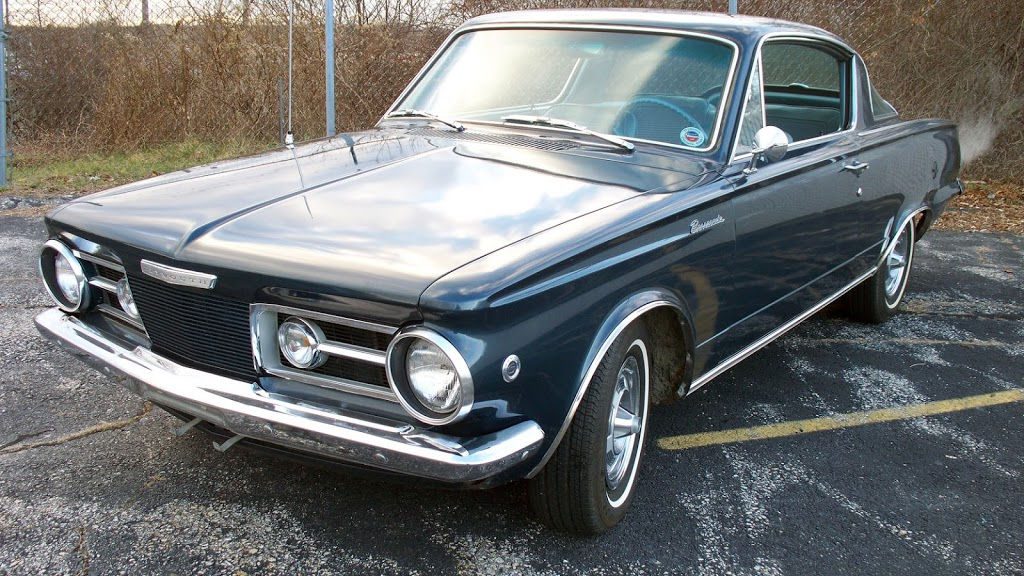
Plymouth introduced the Barracuda Formula S package in 1965.
The Formula S included a V8 engine, heavy-duty suspension, larger wheels and tires, specialized emblems, and a tach.
A Commando 273 CID V8 powered the Barracuda Formula S with 10.5:1 compression, 235 horsepower, and 280 lb-ft of torque.
In the June 1965 issue of Car Life magazine, a Barracuda Formula S ran a 15.9-seconds in the quarter-mile, traveling at 89 miles per hour.
Plymouth produced 9,379 Barracudas with the Commando 273 CID V8 engine. However, no production numbers exist on precisely how many Formula S models were ultimately produced.
1968 Dodge Dart GTS 340
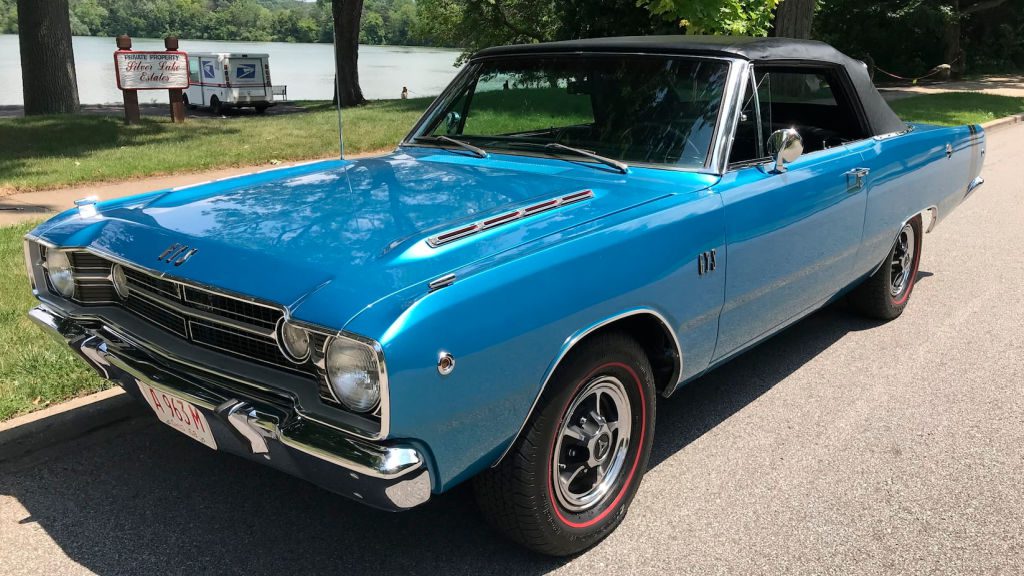
The 1968 Dodge Dart GTS was positioned as an entry-level compact Muscle Car that was a lightweight contender when combined with a 340 CID V8 power plant.
According to Car and Driver magazine in September 1968, “The latest word from the underground is that the little Mopar 340 (in the 1968 Dodge Dart GTS) is the hot set-up. A giant killer from Hamtramck. We’re believers.”
A 340 CID V8 in a 1968 Dart GTS features 10.5:1 compression, 275 horsepower, and 340 lb-ft of torque and is one of the most underrated of Dodge Muscle Cars.
In the April 1968 issue of Hot Rod magazine, a 340 powered Dart GTS ran a 14.38-second quarter-mile at 97 miles per hour.
Dodge produced 8,202 with 5,513 powered by a 340 engine—1,281 were 4-speeds and 4,232 were automatic transmissions.
1969 Plymouth ‘Cuda 340
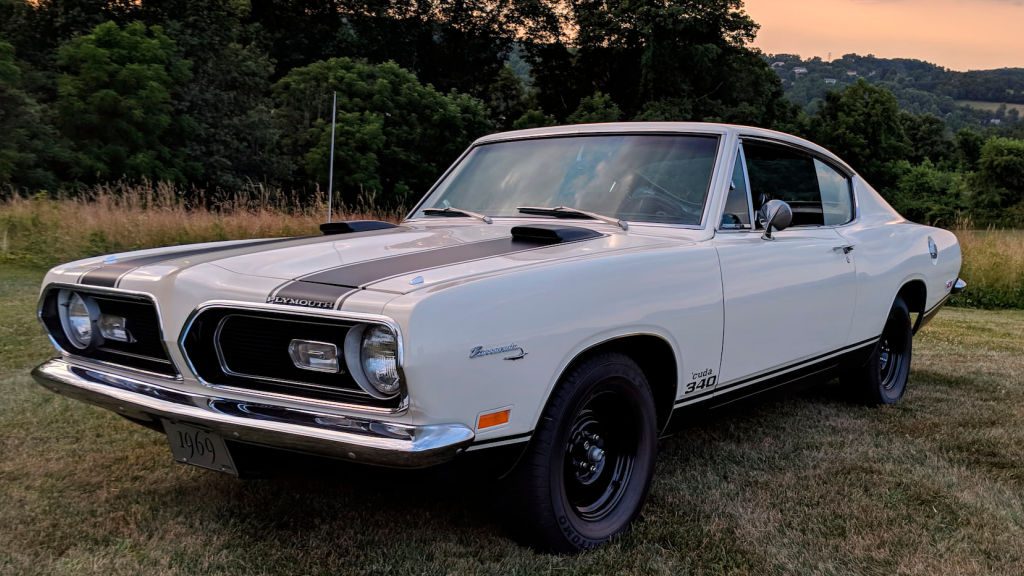
Plymouth focused on performance in 1969 and added a ‘Cuda trim package based on the Barracuda Formula S option.
The ‘Cuda package was available with either a 340, 383 or 440 Super Commando V8 engine. The standard engine was the small block 340.
A 340 CID V8 powered 1969 Plymouth ‘Cuda features 10.5:1 compression, 275 horsepower, and 340 lb-ft of torque and likely ran low 14-second quarter-mile times from the factory.
Plymouth produced 666 with 98 hardtops (68 4-speeds and 30 automatics) and 568 fastbacks (402 4-speeds and 166 automatics).
1970 Dodge Dart Swinger 340

The 70 Dart Swinger 340 came standard with nonfunctional dual-snorkel hood scoops, a bumblebee stripe, and a 3-speed manual transmission.
Dodge discontinued convertible models and big blocks in the Dart to help reduce internal competition with the new Dodge Challenger.
A 340 CID V8 powered 1970 Dodge Dart Swinger featured 10.5:1 compression, 275 horsepower, and 340 lb-ft of torque. It was the biggest cubic inch displacement engine offered in a Dart that year.
Dodge produced a total of 10,382 with 955 3-speeds, 4,423 4-speeds, and 5,004 automatics. All were hardtop models.
1970 Plymouth Duster 340
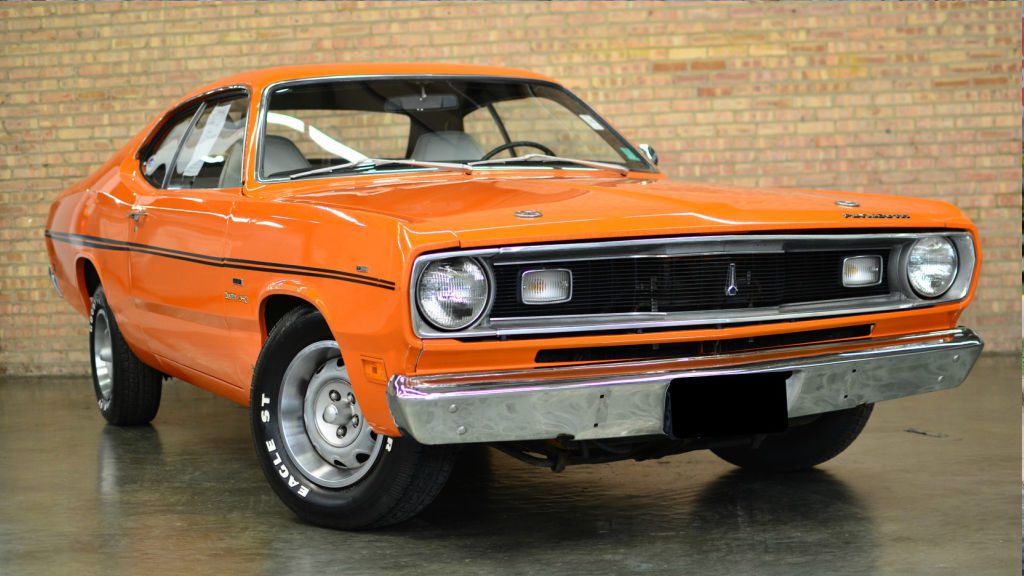
The Plymouth Duster was introduced in the 1970 model year and ended unceremoniously in 1976.
The front clip was from a Valiant, as were the door skins. However, all other sheet metal was 100% unique to the Duster.
The new semi-fastback roof design had distinctive lines with a unique rear valance having no bezels.
There were two V8 engine options available on the Duster, including a 318 CID V8 and the top dog 340 CID V8.
A 340 CID V8 powered the 1970 Plymouth Duster features 10.5:1 compression, 275 horsepower, and 340 lb-ft of torque.
In the March 1970 issue of Super Stock Drag Illustrated, a Duster 340 went 14.09 seconds in the quarter-mile, traveling at 14.09 miles per hour.
Plymouth produced 21,799 with 3,401 3-speeds, 7,390 4-speeds, and 11,008 automatics. All were sport coupes.
1970 Plymouth AAR ‘Cuda 340 6-BBL
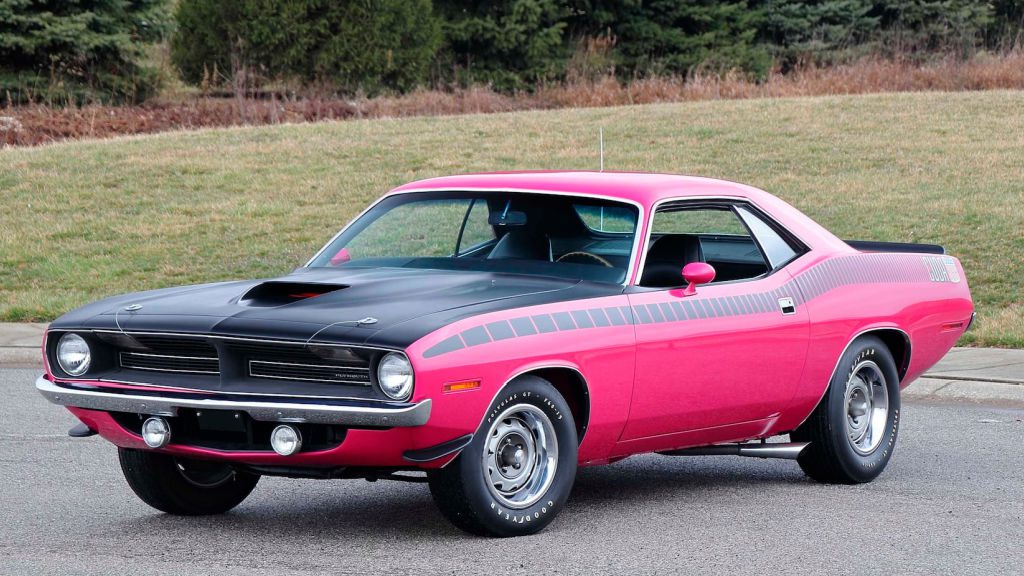
Plymouth’s entry into the 1970 Trans-Am racing circuit was the AAR (All American Racing) ‘Cuda piloted by Dan Gurney and Swede Savage.
While the AAR ‘Cuda made a valiant effort and qualified for three pole positions, it never won any Trans-Am races it participated in.
This one year only model offered many distinctive features, including a 340 with 3×2-bbl carburetors, fiberglass hood with flat NACA duct hood scoop and hood pins, front chin spoiler, rear ducktail spoiler, blacked-out hood and grille, side exhaust, and special AAR side stripes.
A 340 CID V8 1970 Plymouth AAR ‘Cuda with 3x2bbls carburetors featured 10.5:1 compression, 275 horsepower, and 345 lb-ft torque.
In the June 1970 issue of Sports Car Graphic magazine, an AAR Cuda produced a 14.40-second quarter-mile traveling at 98.4 miles per hour.
To meet homologation requirements, Plymouth produced 2,724 with 1,120 4-speeds and 1,604 automatics. All were hardtops.
1970 Dodge Challenger T/A 340 Six Pack
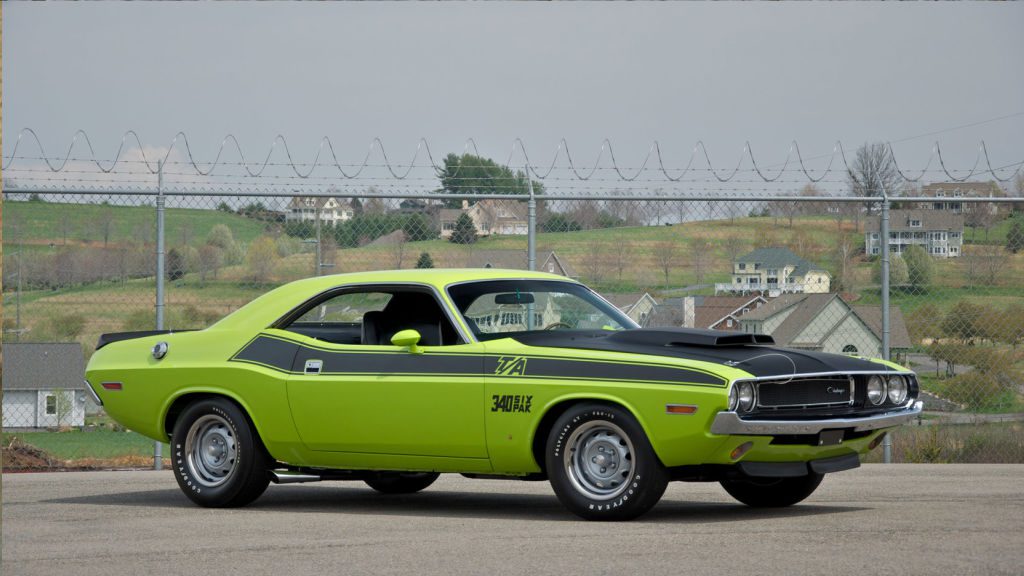
Like the AAR ‘Cuda, the 1970 Dodge Challenger T/A (Trans Am) was a one-year-only model produced to compete in the Trans-Am racing circuit.
The Challenger T/A package cost $865.70 and included several distinctive features.
Of note was a 340 with 3×2-bbl carburetors, dual-snorkel scooped fiberglass hood with hood pins, front chin spoiler, rear ducktail spoiler, blacked-out hood and grille, side exhaust, 340 Six Pack decals, and T/A side stripes.
A 340 CID V8 with 3×2-bbls in a 1970 Dodge Challenger T/A features 10.5:1 compression, 290 horsepower, and 345 lb-ft torque.
In the August 1970 issue of Hi-Performance Cars magazine, a Challenger T/A ran a 13.99-second quarter-mile traveling 100 miles per hour.
To satisfy Homologation race requirements, Dodge produced 2,400 Challenger T/As with 989 4-speeds and 1,411 automatics. All were hardtops.
1971 Dodge Demon 340
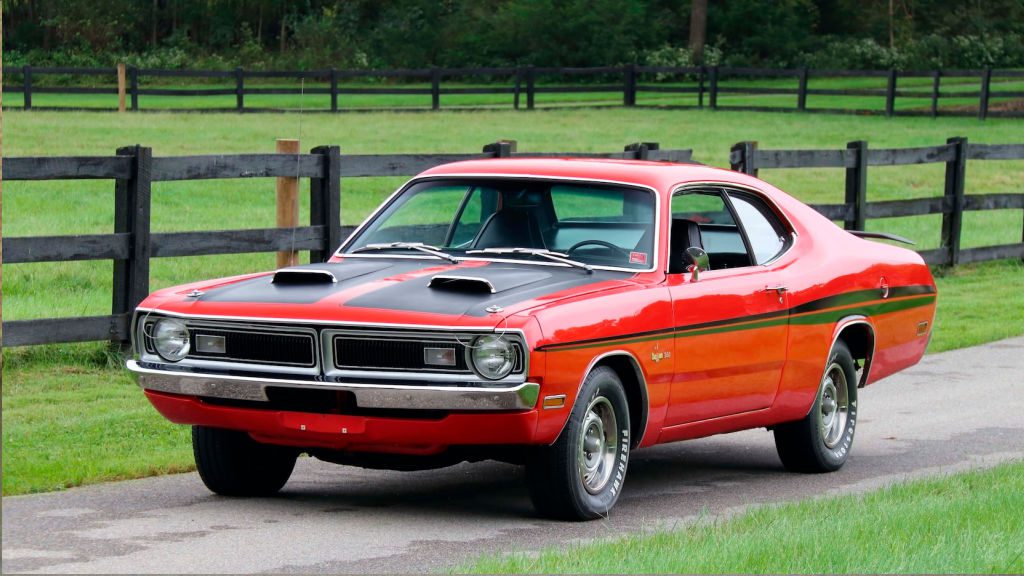
The Dart Swinger 340 was replaced by the Dodge Demon 340 in 1971 to answer the Plymouth Duster 340 model introduced in 1970.
A Dodge Demon offered two V8 engine options, including a 318 CID V8 and the top performing 340 CID V8.
Dodge dropped the Demon name and logo, featuring a Devil with a pitchfork, after 1972 in response to the outcry from Christian faith groups.
A 340 CID V8 powered the 1971 Dodge Demon features 10.5:1 compression, 275 horsepower, and 340 lb-ft of torque.
In the January 1971 issue of Motor Trend, a Demon 240 ran a 14.49-second quarter-mile at 98.25 miles per hour.
Dodge produced 7,981 with 998 3-speeds, 2,051 4-speeds, and 4,932 automatics. All were sport coupes.
1971 Plymouth Road Runner 340
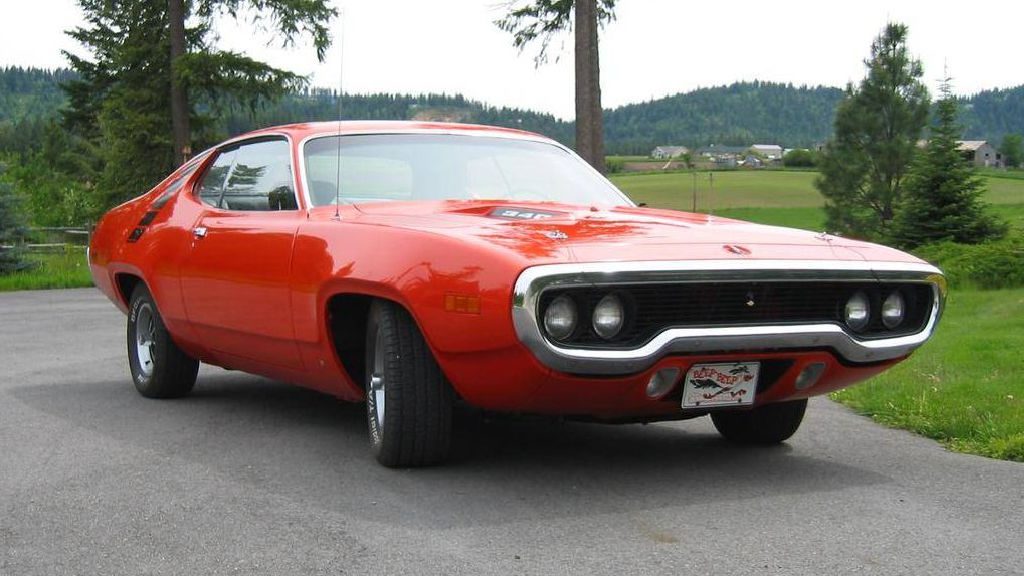
From 1968 through 1970, a Plymouth Roadrunner could only come with a big-block V8 engine ranging from a 383, 440, to a 426 Hemi.
For the first time in 1971, a 340 small block LA engine was available under a Roadrunner’s hood.
A 340 CID V8 in a 1971 Plymouth Roadrunner features 10.5:1 compression, 290 horsepower, and 345 lb-ft of torque.
Unfortunately, no performance statistics were recorded on the Plymouth Roadrunner 340 by any automotive magazines back in 1971.
Of the 13,644 produced, 1,681 came with a 340 VID V8, with 438 coming with a 4-speed and 1,243 with an automatic.
1972 Dodge Charger Rallye 340
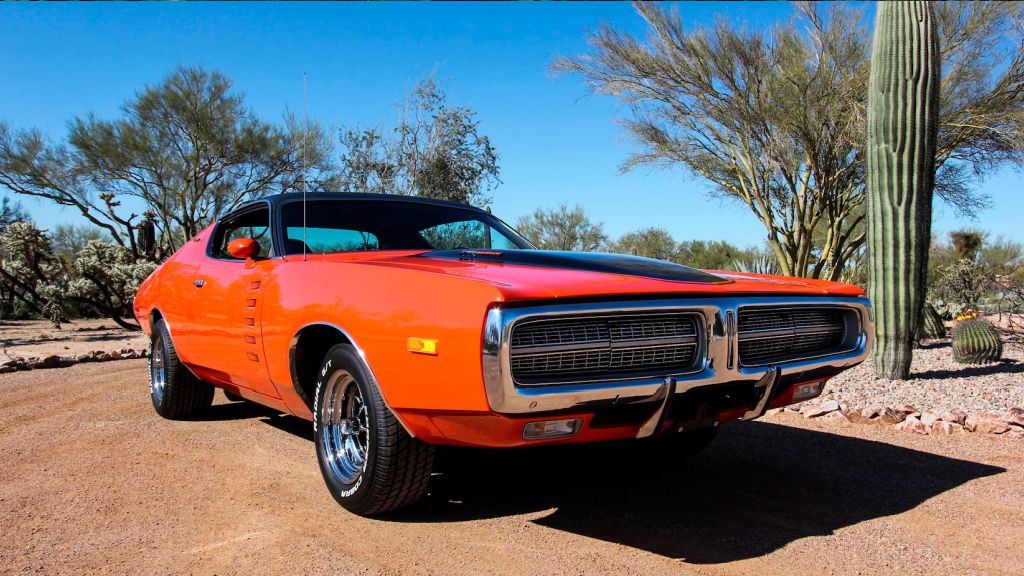
1972 marked the end of the Charger R/T and Super Bee models, and in its place was the Charger Rallye.
Aimed at beating insurance costs and conforming to newly formed emission standards, a 1972 Dodge Charger Rallye still offered muscle car looks with mild performance.
According to the 1972 Charger brochure, you could option one with a 340, 400, or 440 CID V8 engine. That said, Dodge also produced a 318 option in the Rallye even if it is unconfirmed in the brochure.
In 1972, the 318 CID V8 and 340 CID V8 was the first year a small block LA engine was available in a performance model B-Body Charger.
A 340 CID V8 in a 1972 Dodge Charger Rallye features 8.5:1 compression, 240 horsepower, and 290 lb-ft of torque.
Unfortunately, there aren’t any magazine drag tests conducted that can provide performance data in the quarter-mile.
Dodge produced 3,791 Charger Rallyes with 460 coupes and 3,431 hardtops. Unfortunately, no official breakdown by engine exists.
1973 Plymouth Roadrunner 318
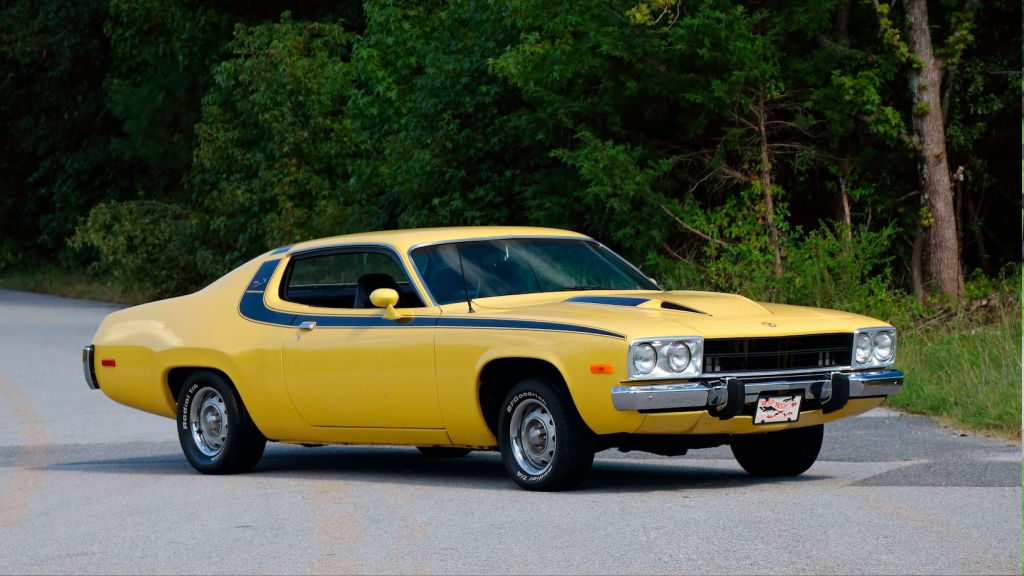
High-performance vehicles were changing in 1973 due to high insurance premiums, tighter EPA emissions, and gas shortages.
Auto manufacturers, including Dodge and Plymouth, began winding down gas-guzzling big-blocks in favor of fuel-efficient small blocks.
A 318 CID V8 became the standard engine for the Roadrunner in 1973, with optional 340, 400, and 440 CID V8 options.
The standard 318 featured 8.6:1 compression, 230 horsepower, 340 lb-ft of torque, and a first-ever 2-bbl carburetor with dual exhaust.
Plymouth produced 19,056 Roadrunners in 1973. All were hardtops. Unfortunately, no records exist on the breakdown by engine option.
1974 Plymouth Duster 360
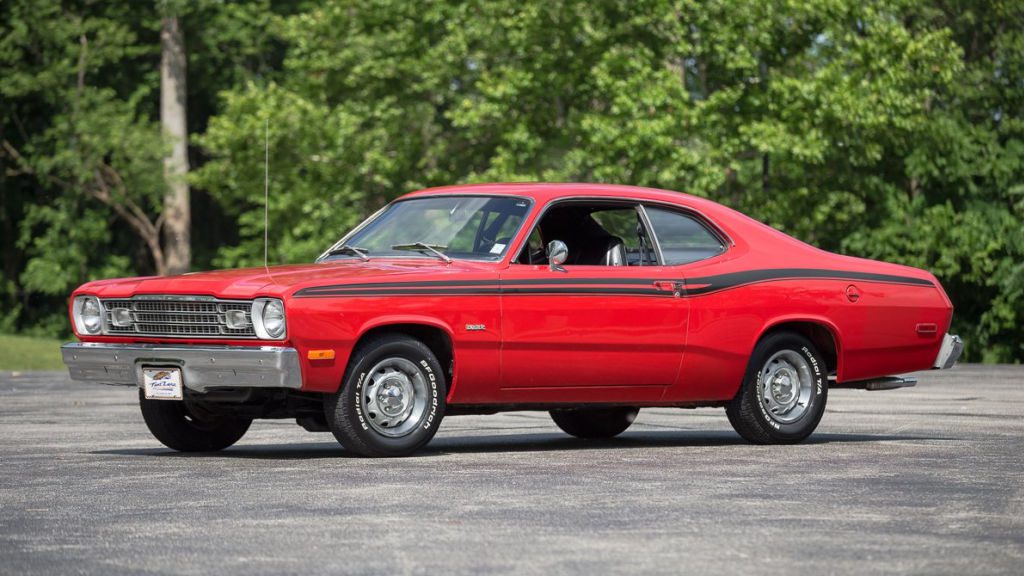
Until 1974, the highest performance engine available in the Duster was the 340 CID V8 LA engine.
However, in 1974, the 360 CID V8 was introduced in the Plymouth Duster lineup and was deturned to meet new emission regulations.
A performance powerhouse it was not but was the mightiest offering Plymouth could muster that year.
While it provided 20 extra cubic inches, it utilized several key parts from the 340, including camshaft, heads, intake manifold, and carburetor.
A 360 CID V8 featured depressing 8.4:1 compression, 245 horsepower, and 320 lb-ft torque.
Unfortunately, there wasn’t any performance testing conducted by magazines on the 1974 Duster 360 to report its quarter-mile time.
Plymouth produced 3,879 Duster 360s in 1974. All were sport coupes.
Take Our Poll!
Conclusion
The stock small-block Mopars could run 13 and 14-second passes in lightweight A and E-Body models all day long. In the heavier B-Body models, they were 15 to 16-second quarter-mile runners.
However, a small block Mopar could keep up with a stock big block with a little tuning and basic performance upgrades.
For many, the LA engine was a more cost-effective way to have the same styling with slightly slower performance. Not only that, but they also offered better gas mileage, lower insurance premiums, and improved handling.
For those in the know, a small block Mopar is still a great muscle car to own.
Ryan
Ryan has owned muscle cars since 1986 and currently owns a 1972 Dodge Charger Rallye. He combines passion and experience to create engaging content for fellow muscle car enthusiasts. In 2018, he founded Muscle Cars Illustrated, authoring hundreds of articles on tips, history, and trends in the muscle car industry. He attends national car shows, auctions, and museums to stay current with the latest developments in the muscle car industry.